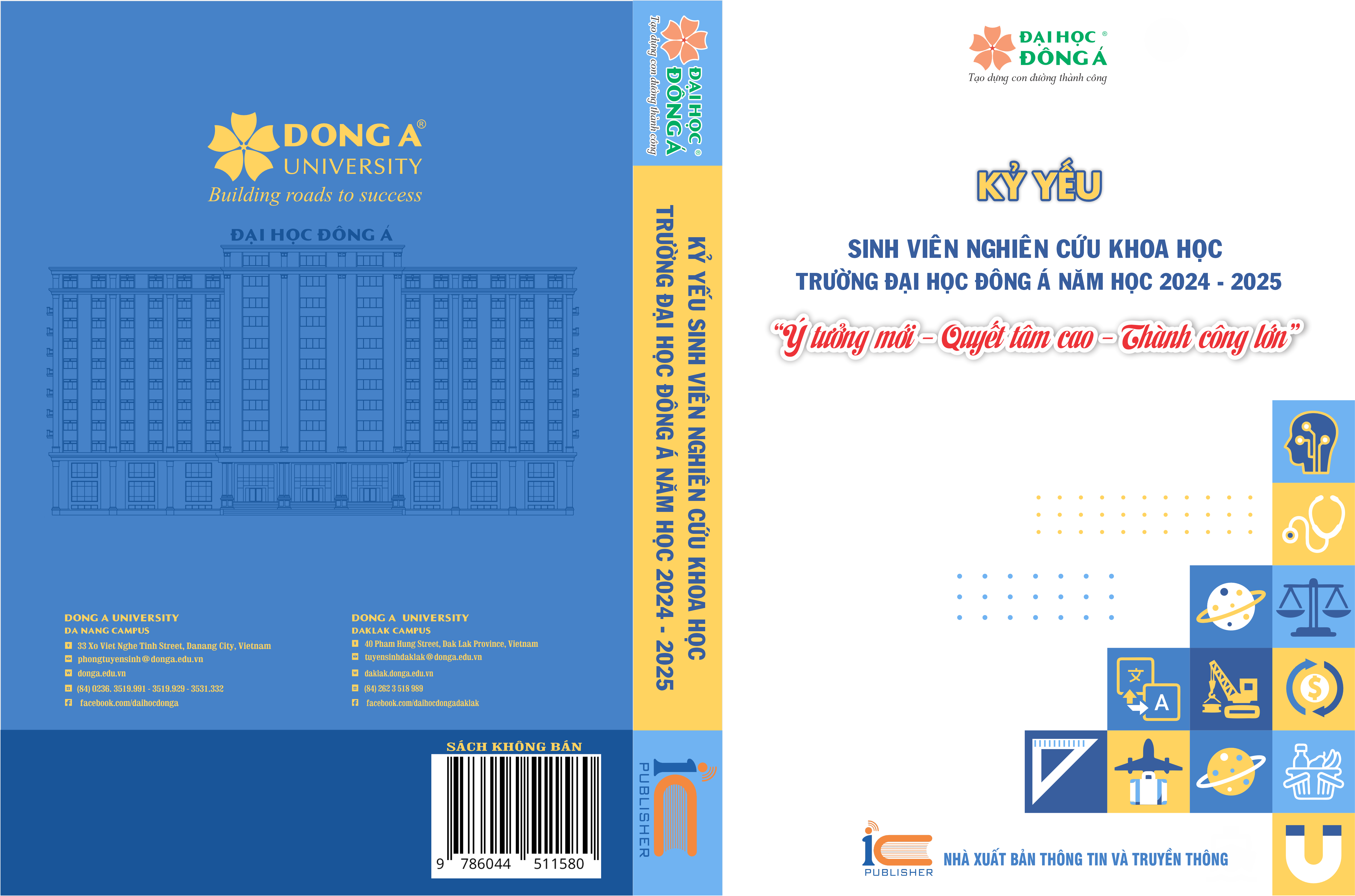FACTORS AFFECTING CONSUMERS’ INTENTION TO BUY PRODUCTS WITH ECO-FRIENDLY PACKAGING IN DA NANG CITY
Main Article Content
Abstract
Nowadays, eco-friendly packaging is increasingly regarded as an optimal solution for minimizing harmful impacts on human health and the environment, thereby contributing to the protection of ecosystems. The purpose of this study is to identify and analyze the extent to which various factors influence consumers’ intentions to purchase products with sustainable packaging in Da Nang City. Based on the findings, the study aims to provide practical recommendations to encourage responsible consumption behavior. A quantitative research method was employed, using a structured questionnaire survey with a sample size of 254 respondents. The surveyed group consisted of consumers in Da Nang aged 18 years and older. The results reveal that subjective norms (0,318) are the most influential factor affecting the intention to buy products packaged with environmentally conscious materials, followed by environmental concern (0,276), health safety needs (0,25), personal ethical standards (0,247) and attitudes (0,216).
Article Details

This work is licensed under a Creative Commons Attribution-NonCommercial-NoDerivatives 4.0 International License.
Keywords
Eco – friendly packaging, purchase intention, sustainable consumption
References
Khanh, N.H., Nhung N.T.H.. (2023). Nghiên cứu các yếu tố ảnh hưởng đến quyết định mua sản phẩm sử dụng bao bì thân thiện với môi trường của khách hàng tại Bình Dương.Tạp chí Công thương, số 8, 320-325
Lê Quang Minh và Nguyễn Danh Nam (2024). Các yếu tố tác động tới ý định mua sản phẩm có bao bì thân thiện với môi trường của khách hàng cá nhân tại thành phố Hà Nội. Tạp chí Quản lý Nhà nước, số 347.
My, N. H. D., Chau, T. H. B., Giang, N. T. H., & Hung, P. X. (2022). Ý định mua của người tiêu dùng đối với sản phẩm trà có bao gói thân thiện với môi trường trên địa bàn thành phố Huế. Tạp chí Khoa học Đại học Huế: Kinh tế và Phát triển, 131 (5C), 137-160,
Chan, R. (2001), Determinants of Chinese Consumers’ Green Purchase Behavior, Psychology & Marketing, pp. 389-413.
Coleman, JS (1990). Foundations of social theory.
Macht, J., Klink-Lehmann, J., & Venghaus, S. (2023). Eco-friendly alternatives to food packed in plastics: German consumers’ purchase intentions for different bio-based packaging strategies. Food Quality and Preference, 109 (5), 104884.
Martin, D. M., Schouten, J. W (2012). Sustainable Marketing. Upper Saddle River, NJ: Pearson Prentice Hall.
Peattie, K. (1992). Green Marketing, The M&E Handbook series, Pitman Publishing.
Prakash, G. and Pathak, P. (2017). Intention to buy eco-friendly packaged products among young consumers of India: A study on developing nation. Journal of Cleaner Production, 141, pp. 385–393.
Palmer, M. A. (2000). Linkages between sediment biota and life above sediments potential drivers of biodiversity and ecological processes, Washington, D.C.
Peattie, K. (1992). Green Marketing, The M&E Handbook series, Pitman Publishing.
Rokka, J. & Uusitalo, L. (2008). Preference for green packaging in consumer product choices–do consumers care?. International Journal of Consumer Studies, 32(5), pp. 516-525.
R. Rettie, C. Brewer (2000). The verbal and visual components of package design. Journal of Product & Brand Management, Vol. 9 No.1, pp. 56-70,


